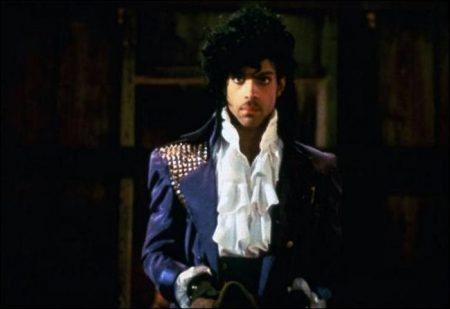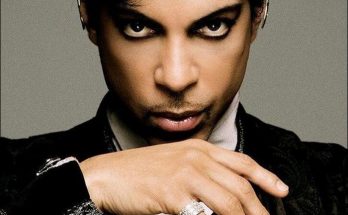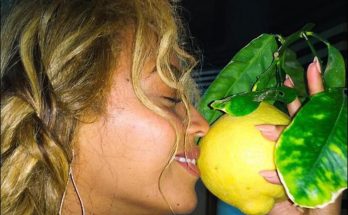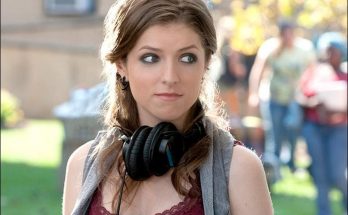Remembering Purple Rain Prince’s rock movie. For more than 30 years Prince’s songs have been soundtrack staples for movies as different as 1989’s Batman and 1990’s Pretty Woman, 2008’s Forgetting Sarah Marshall and 2010’s Gulliver’s Travels, but Prince’s own on-screen film career was meteorically short, blazing brightly, then quickly burning out.
He burst onto the scene with his very first film, 1984’s quasi-autobiographical Purple Rain, returned two years later in the stylish, black-and-white period picture Under the Cherry Moon, and then surfaced only once more in a dramatic feature in 1990’s Grafitti Bridge, reprising his signature role as The Kid from Purple Rain.
When Purple Rain opened on July 27, 1984, riding on the success of its companion album, with its hit tunes like “When Doves Cry” and “Let’s Go Crazy,” there was no ignoring it. Some critics were dismissive — the New York Times’ Vincent Canby called it “probably the flashiest album cover ever to be released as a movie” — but younger reviewers were a lot more enthusiastic about the film, built around Prince’s young musician looking to escape his abusive father and make his musical mark on the world. Calling it “a hokey but mesmerizing rock-video psychodrama,” Entertainment Weekly’s Owen Gleiberman wrote, “Prince magnetizes the camera with The Stare — a rivetingly narcissistic, come-hither gaze that’s equal parts genetics, attitude, and eyeliner.”
Looking back today, director Antoine Fuqua (Training Day), recalls the impact the movie had on him when he first saw it. “Man, I was blown away,” he says. “It had a different form. It wasn’t a normal genre you could put your finger on, and he wasn’t the normal leading man you were used to seeing. He was Prince. It was an unstructured environment as far as movies go, free form in some way.”
Lots of moviegoers agreed: Purple Rain knocked Ghostbusters out of the top spot at the weekend box office. Ultimately, while Beverly Hills Cop (with $234.8 million in domestic grosses) and Ghostbusters (with $229.8 million) headlined that year’s box office rankings, Purple Rain checked in at eleventh place with a highly respectable $68.4 million. Ironically, it ranked just ahead of another film about a musical prodigy, the Oscar-winning Amadeus.
Not that Purple Rain didn’t share in Oscar’s aura, too. It scored one nomination — and win — for best song score (a category that still exists in theory, but hasn’t actually been used since Prince’s victory.) “Very unbelievable,” a soft-spoken, but clearly pleased Prince, dressed in a sparkly purple cloak, said he accepted the award. “I could never have imagined this even in my wildest dreams.”
That probably was something of an understatement, since Prince was a dreamer who was determined to make his dreams come true. For Purple Rain, he found a collaborator in first-time director Albert Magnoli, a young USC Film School grad, who, after spending time observing Prince in his hometown of Minneapolis, convinced him to abandon an earlier script. Instead, Magnoli picked a dozen songs out of 100 potential tunes that Prince submitted, and working with William Blinn, fashioned a screenplay around Prince’s own persona.
Admitting that “Prince’s sudden and unexpected passing is very difficult to process,” Magnoli declined further discussion about the star today, but issued a statement hailing Prince as “a good man, complicated and diligent, and like men of his caliber, he always demanded from himself and others the very best.”
Purple Rain’s success brought Prince two more starring roles in films, distributed by Warner Bros, whose sister record label also released Prince’s albums at the time. But the returns steadily diminished.
Prince took over the directorial reins (with an uncredited assist from cinematographer Michael Ballhouse) on his next feature, Under the Cherry Moon, an intentional throwback to old-school romantic comedy in which plays a gigolo, swindling French women on the Riviera, until he falls in love with one particular heiress. The film grossed just $10.1 million at the domestic box office. And if it’s remembered today, it’s for providing Kristin Scott Thomas, who played Prince’s love interest, with her first big-screen role.
For Prince’s final star turn, Arnold Stiefel, an established music manager who had just taken on Prince as a client, hoped to turn things around. “When we signed him, I thought this is dream come true. Here’s a music man loaded with gifts that so many others haven’t even tapped yet,” Stiefel recalls. “He wanted to be in movies, had a terrific success with Purple Rain, then went south with Cherry Moon. The only problem: Prince was a manager’s dream, except for the part where he didn’t want to be managed. It was interesting, frustrating, but you always knew you were in the presence of a special kind of greatness as eccentric, very eccentric, as he could be.”
As they began discussing Prince’s new project, it looked as if they could sign on Kim Basinger, with whom Prince was friendly; Patti LaBelle; Paula Abdul, to both appear in the film and choreograph it; and director Jonathan Kaplan, who’d just directed Jodie Foster’s Oscar-winning turn in The Accused. “With all those things in place, I went to Mo Ostin at Warner Records and they put up the money,” recounts Stiefel. “But when they said roll ‘em, instead of Jonathan Kaplan directing, it was Prince, and instead of Kim Basinger, it was someone named Ingrid Chavez. But Prince was absolutely determined. He had a laser-eyed view of it and he wanted it all to be a certain way. But it was just a way that other people couldn’t relate to, it was a very unusual movie.”
Prince’s first cut of what came to be known as Graffiti Bridge came in at five hours and 14 minutes, but even cut down, the movie was in trouble. Stiefel laughs as he remembers a test screening in Pasadena. Prince said he planned to arrive late, so asked his manager to hold him a seat in the back row so he could slip in unnoticed. Instead, when the lights went down, Prince chose to arrive through an exit door at the front of the theater, and wearing a canary-yellow outfit, walked up the aisle to the back of the theater. He always knew how to make an exit.
But as big a music star as he had become, Prince couldn’t attract an audience for his third dramatic film. Graffiti Bridge grossed just $10.1 million. Prince’s movie career had ended.
Visits: 83



